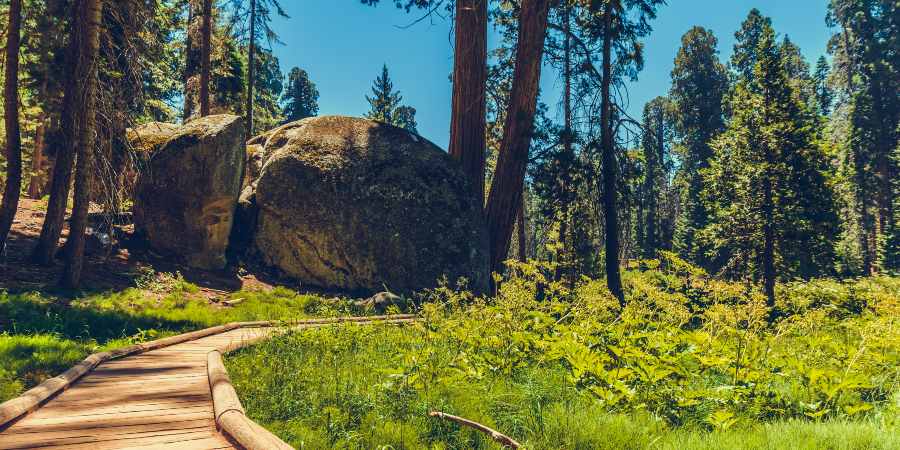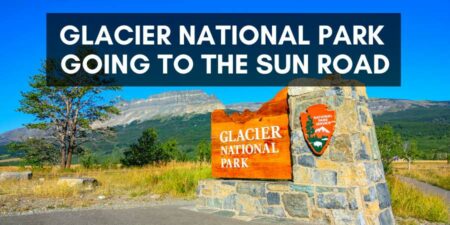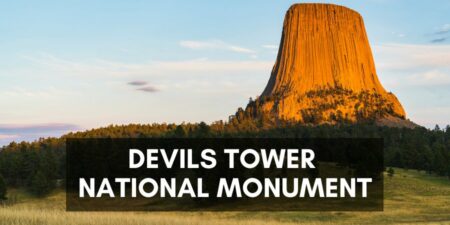If you love the outdoors and learning more about our country’s history and landscape, then you’ll want to explore the US National Historic Trails System.
While the National Scenic Trails focus on protecting and teaching about regional ecosystems, the National Historic Trails follow events and landmarks that shape America as we know it today.
With trails that cover both urban and rural regions across the United States, you’re sure to have one close to you. So please check out this guide that details all the historical trails, their locations, and what you’ll see and learn along the way!
Things to Know About the US National Historic Trails
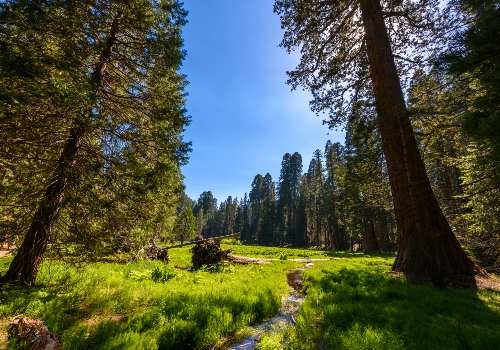
Creating easy-access trails that follow historical events was a priority of the National Trails System Act of 1968. These trails allow citizens to enjoy learning about America’s past while following different routes.
While most people assume the historic trails are away from cities, many encompass paths through urban areas.
It’s important to note that Historic Trails are not always a physical trail you can traverse fully on foot, but more of a route taken in the past full of historical significance. As a result, parts of some historic trails may have to be driven or even followed using a boat.
The US National Historic Trails provide a great learning opportunity during RV and camping trips, as they blend hiking and commemoration of important events through stops at landmarks, museums, and cultural centers.
Always inquire about entrance or parking fees directly from the specific location you plan to embark on your historic trail. In addition, ask about any trail closures or alerts that may impact your hiking or travel plans, and don’t forget to ask where you can get your National Parks Trail Passport stamped.
Between all the US National Trails, including the scenic and recreational trails, there are more than 88,700 miles to explore, so let’s dive into the details of where you can find the historic trails and what they have to offer!
National Historic Trails
National Historic Trails aims for guests to gain more insight into the places and paths of historical trade, migration, military action, and exploration in US history.
Ala Kahakai National Historic Trail

Length: 175 miles
State: HI
The Ala Kahakai trail highlights the Native Hawaiian landscape and culture by protecting historically significant island trade routes and showcasing the unique lava land formations and ecosystem.
The trail meanders along the sea and showcases ancient Hawaiian sites. The unusual terrain is on display as your traverse the trail, from barren lava flats to secret beaches, to caves to anchialine pools.
The trail is not continuous but runs in segments from the northern tip of the island, down the western and southern coast, to the eastern boundary of Hawaii Volcanoes National Park.
California National Scenic Trail

Length: 5,600 miles
States: CA, CO, ID, KS, MO, NE, NV, OR, UT, WY
Gold fever inspired this national trail that follows the routes of a quarter-million emigrants from Missouri in the east to California during the 1840s and 1850s, the most remarkable migration of people in American history.
You can follow the ruts of overland wagons still evident in the soil and stop to view the wayside exhibits or visit the interpretive centers or museums along the trail that tell stories of those who made this journey. Side trails and detours were commonplace to avoid harsh landscapes or weather as the migrants moved west.
You can choose to download the Auto Tour Routes with maps that follow or closely parallel the historic trails if you want to cover the path at a faster pace.
Captain John Smith Chesapeake National Historic Trail
Length: 3,000 miles
States: VA, MD, DE, DC, PA, NY
The Captain John Smith Chesapeake trail highlights the explorer’s journey to map the Chesapeake Bay region and preserve the sacred American Indian sites and archeological treasures he documented on his journeys.
The first of its kind water trail follows three trips of John Smith up and down the major and minor waterways and islands of Chesapeake Bay. The trail hugs the coastline, with stops at points of interest along the way.
You can boat, hike, or drive the trail, with four different visitors center to learn more about each local area. The John Smith Trail is rich in the early history of the settlement of America and dealings with the American Indians.
Chesapeake National Historic Trail (Video)
El Camino Real de los Tejas National Historic Trail
Length: 2,600 miles
States: TX, LA
The El Camino Real de Los Tejas Trail takes a journey from the Rio Grande in Texas and ends in northwestern Louisiana. The trail covers various routes that connected the old communities, missions, and ranches of the region while highlighting the Spanish culture and Texans’ movement to gain independence.
The historic trade and travel route continue to Mexico City, but the US portion of the trail ends at the border.
The trail is not continuous, with many portions covering private land. However, you can travel segments by road, and you’ll find it moves through urban and rural areas.
El Camino Real de Tierra Adentro National Historic Trail
Length: 404 miles
States: NM, TX
The El Camino Real de Tierra Adentro Trail brings to life three centuries of culture, conflict, and trade between native and European peoples living in the region.
The trail runs from El Paso in Texas, with most of the route in New Mexico, ending in Espanola, with a detour to Sante Fe. This “Royal Road” was the main thoroughfare that connected ancient travel, trade, and information routes between Old Mexico and the American Southwest.
Along the path, you’ll encounter the Yost Draw, Fort Craig, Mesquite Historic District, the Kuaua Ruins, and so much more that make this trail such a memorable experience.
Iditarod National Historic Trail
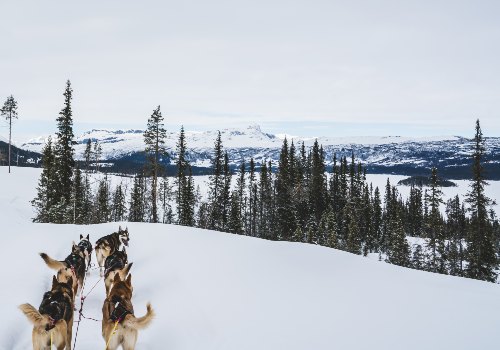
Length: 2,400 miles
States: AK
The Iditarod Trail in Alaska is the only winter trail in the National Trails System and is a two-part route. The main trail has 1,000 miles that range from Nome to Seward and 1,400 miles of side and connecting trails to even more historical sites and communities.
Known today for the famous dog-sled race, the Iditarod Trail was once the main path of frontier trade and travel between ancient Native settlements. Later in history, the mining camps, settlements, and trading posts that popped up during Alaska’s Gold Rush added to the regional stories.
The Iditarod Trail is an irresistible challenge for serious hikers during the winter, but snow machines are allowed. Summer trail hikes are best around the beaches in Nome and the edges of the mountains in Anchorage.
Juan Bautista de Anza National Historic Trail
Length: 1,200 miles
States: AZ, CA
The Juan Bautista de Anza trail stretches from the US-Mexico border at Nogales, Arizona, up through California desert regions, outward to the coast, and upward to San Francisco.
The trail is one Juan Bautista de Anza took in 1775 when he led 240 women, men, and children to the San Francisco Bay to become the first non-Natives to build a mission and presidio and create a settlement in the area.
The trail now teaches the stories of both the new settlers and the Native Americans, including their ancient and diverse culture and how it affects modern-day Arizona and California.
For a truly unique way to engage with this trail, you can hop on the Amtrak Coast Starlight from San Jose to Santa Barbara, where guides from the Rails and Trails program narrate your journey.
Juan Bautista de Anza National Historic Trail (Video)
Lewis and Clark National Historic Trail
Length: 4,900 miles
States: IA, ID, IL, IN, KS, KY, MO, MT, NE, ND, OH, OR, PA, SD, WA, WV
The Lewis and Clark Historic Trail follows the path of their 1803-1806 expedition to map and discover new lands. The route runs from Pittsburgh, Pennsylvania, all the way to Astoria, Oregon.
Enjoy an abundance of local culture and attractions that tie into the theme of Lewis and Clark’s determination to help settle western lands newly acquired by the Louisiana Purchase.
To learn more and make planning your trail visit more manageable, you can look at the NPS State by State Guide. In addition, there are plenty of campgrounds and RV parks near the trail to turn your next outdoor vacation into a truly memorable experience.
Mormon Pioneer National Historic Trail
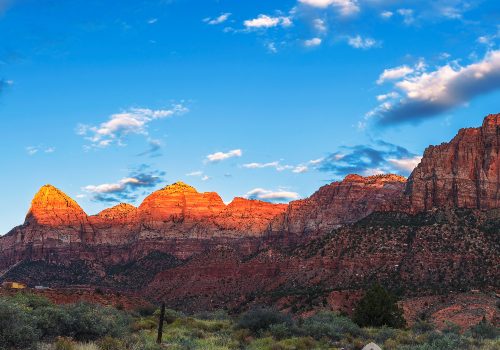
Length: 1,300 miles
States: IL, IA, NE, UT, WY
The Mormon Pioneer National Historic Trail cuts across five states of the American heartland from Nauvoo, Illinois, to reach the Great Salt Lake Valley in Utah. The trial was set in 1846 when Morman leaders and families were pressured to leave their Illinois settlement for judgment-free Mexican-held land out west.
The trail is long, with numerous points of interest along the way that ties into the Mormon emigration and general trade, the western push, and the frontier life of the times.
Visitors can follow portions of the original path on foot or via the Auto Tour Route. However, large portions of the original route are now in private hands or part of American Indian tribal reserve land.
Nez Perce (Nee-Me-Poo) National Historic Trail
Nez Perce (Nee-Me-Poo)
Length: 1,170 miles
States: ID, OR, MT, WY
The Nez Perce (Nee-Me-Poo) National Historic Trail begins at Wallowa Lake, Oregon, and stretches northeast to the Bear Paw Battlefield near Chinook, Montana. The route follows the trail the Nez Perce tribe took in 1877 to avoid a forced transition onto a reservation.
You can follow the trail by foot, auto, or horseback in various sections, but for a truly hands-on experience, you can sign up for the Nez Perce Trail Foundation Educational Trail Tour. Each summer, the group shares the stories and historic sites of the Nez Perce people during a ten-day-long camping adventure that follows half of the trail’s length.
Nez Perce National Historic Trail (Video)
Old Spanish National Historic Trail
Length: 2,700 miles
States: AZ, CA, CO, NV, NM, UT
The Old Spanish National Historic Trail commemorates thousands of mule pack trains that moved between Sante Fe, New Mexico, and Los Angeles, California, in exchange for locally made goods.
The trail can be challenging to traverse in places, as it moves over deserts, rivers, mountains, and coastal valleys. You can travel sections via the Auto Tour Route, but please leave time for fun at the numerous recreational sites along the way that include places to bike, climb, paddle, horseback ride, camp, and RV.
An excellent place for more information to plan your visit is the Old Spanish Trail Association, dedicated to preserving frontier history and educating modern visitors on the trail’s wonders.
Oregon National Historic Trail
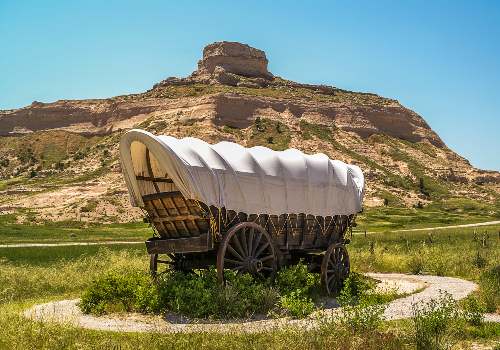
Length: 2,170 miles
States: ID, KS, MO, NE, OR, WA, WY
The abundance of emigrants moving to the rich farmlands of Oregon has left a permanent scar of wagon wheel ruts on the land that follows the Oregon National Historic Trail that starts near Kansas City, Missouri, and ends near Portland, Oregon.
But even before the mass migration of people westward, many parts of the trail were used by ancient Native Americans as trade and travel routes. With historic sites to see in each state, you’ll never be far from an enlightening experience.
Much of this trail is hike-worthy, but you can also take advantage of the Auto Tour Route Interpretive Guide to fill in sections of the trail you can’t hike.
Overmountain Victory National Historic Trail
Want to Connect With a Community of Over 1,078 RV Enthusiasts?
Length: 330 miles
States: NC, SC, TN, VA
The Overmountain Victory National Historic Trail gives homage to the path of the patriot militia during the Kings Mountain campaign of 1780.
This trail has 87 miles of hiking paths, with the rest marked with a Commemorative Motor Route that follows state highways (look for signs with the trail logo). Brochures are available that post the trail-affiliated historic sites, museums, and wayside exhibits for more details about this movement of patriots during the campaign.
Overmountain Victory National Historic Trail (Video)
Pony Express National Historic Trail
Length: 2,000 miles
States: CA, CO, KS, MO, NE, NV, UT, WY
The Pony Express National Historic Trail focuses on the amazing feats of early horse riders who would carry mail and critical information between St. Joe, Missouri, and San Francisco, California, in only ten days.
Once you understand the distance and terrain of this trail that covers eight states, you’ll be able to fully appreciate the dedication of the relay of Pony Express riders.
The NPS has a great interactive map with noteworthy stops along the route to enhance your experience on the trail, whether you hike, bike, horseback ride, or drive.
Santa Fe National Historic Trail
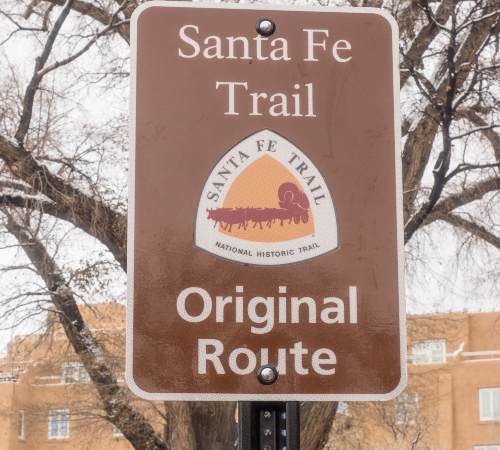
Length: 1,203 miles
States: CO, KS, MO, NM, OK
The Santa Fe National Historic Trail was a primary “highway” for emigrants seeking to make a new life in the American Southwest. The rigorous journey through five states showcases the determination of pioneers looking for a better life.
The path is not a continuous hiking trail, nor is it well-marked where it goes through private lands or communities you need to follow by automobile. However, the story and related artifacts are available at various interpretive centers, museums, and wayside attractions along the way.
Selma to Montgomery National Historic Trail
Length: 54 miles
State: AL
The shortest of all National Trails is the Selma to Montgomery Route in Central Alabama, commemorating the peaceful marches fighting for passage of the 1965 Voting Rights Act. The march was led by Dr. Martin Luther King Jr., with supporters of all colors joining to fight for the civil right for blacks to vote.
This trail offers history, museums, stories, interpretive centers, landmarks, and more, making it an important and very educational trail that everyone should visit at least once.
Star-Spangled Banner National Historic Trail
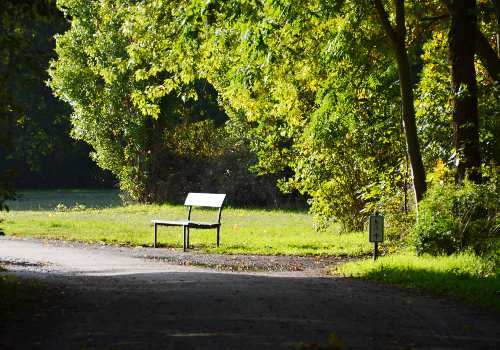
Length: 560 miles
States: DC, MD, VA
The Star-Spangled Banner National Historic Trail starts in Solomons, Maryland. It brings to life the events, people, and stories of the places that culminated in Francis Scott Key writing the US national anthem.
The Chesapeake Campaign endured three years of fighting during the War of 1812, and this trail has both land and water routes to highlight the perils of the birth of our country as we know it today.
The trail markings along the route aren’t complete yet, but the path ends in Washington, DC. Local landmarks, museums, and even guided 1812 replica schooner trips are available to enrich your understanding of this historic trail.
Trail of Tears National Historic Trail
Length: 5,045 miles
States: AL, AR, GA, IL, KY, MO, NC, OK, TN
The Trail of Tears National Trail honors the horrific forced removal of the Cherokee people from their native homelands in Tennessee, Georgia, and Alabama and moving them to Indian Territory in what is now Oklahoma.
The trail follows the arduous journey the Cherokee had to take mostly on foot for thousands of miles, with death and disease a daily occurrence. Luckily, the resilience of the Cherokee Nation allowed their culture and people to regroup and thrive in their new location.
Visitors are encouraged to walk a portion of the many trail legs to understand the plight of the Cherokee families leaving their beloved lands.
Washington-Rochambeau Revolutionary Route National Historic Trail
Length: 700 miles
States: MA, RI, CT, NY, NJ, PA, DE, MD, VA, DC
The Washington-Rochambeau National Historic Trail commemorates the union of General Rochambeau’s French Army and General Washington’s Continental Army to fight against the British Army in Yorktown, Virginia, in 1781.
The troops traveled hundreds of miles, becoming the largest American Revolution troop movement recorded. The alliance brought victory and helped secure American independence from the British.
The trail offers hundreds of landmarks and museums on the route to explore, a walk down a historic Philadelphia street, water tours of the Chesapeake Bay, and so much more.
"Man cannot discover new oceans unless he has the courage to lose sight of the shore."
-- Andre Gide

